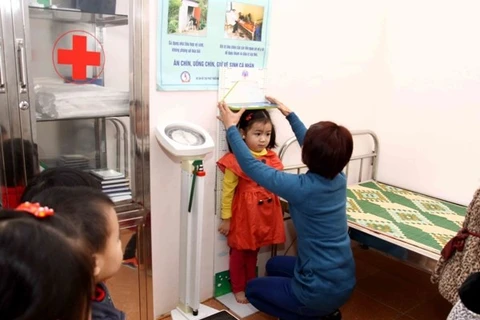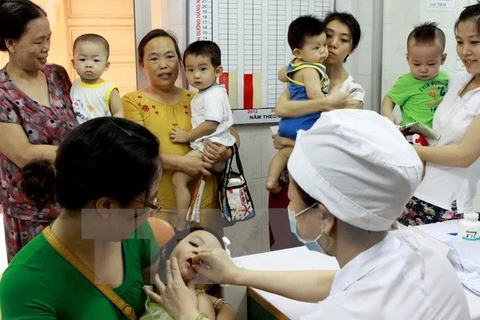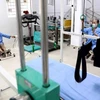 The rate of overweight and obese primary school students is 29 percent, according to a recent study (Photo: VNA)
The rate of overweight and obese primary school students is 29 percent, according to a recent study (Photo: VNA) Hanoi (VNA) - A lack of physical activity and inappropriate diets are to blame for the high rate of obesity among primary school students, according to a new study by the National Institute of Nutrition.
The study shows that the rate of overweight and obese primary school students is 29 percent, higher than that of secondary school students (19 percent) and high school students (9.5 percent).
The study was conducted between 2017 and 2018 on 5,028 students aged 7 to 17 years old at 75 schools in Hanoi, HCM City and Thai Nguyen, Nghe An and Soc Trang provinces.
It revealed shortcomings in the nutritional intake and physical activity of children of different ages.
According to the study, primary school students’ dietary intake exceeds the recommended dietary allowance in terms of energy and protein. However, they have a low level of physical activity, leading to a high rate of obesity, especially in urban areas.
Meanwhile, intake of secondary and upper secondary school students lags behind the recommendation for energy, iron, zinc and various types of vitamins, resulting in a high rate of malnutrition in lower and secondary school students.
The study also points out some factors leading to obesity including age, gender, area, socio-economic status, living conditions and the education level of parents.
The high number of overweight children can be attributed to an inactive lifestyle and excessive consumption of low nutrition, high-fat foods such as fast food and soft drinks.
Speaking at a workshop held on July 3 to release the study results, deputy director of the National Nutrition Institute Truong Tuyet Mai said Vietnam was facing a dual burden of malnutrition and obesity.
The study found a high rate of malnutrition in rural areas while urban areas recorded higher rates of obesity.
A survey by the Institute in 2017 showed that the stunting rate for children under 5 was 23.8 percent while the rate of underweight children was at 13.8 percent, meaning one out of every four Vietnamese children under the age of five was stunted or malnourished.
"Students make up more than a quarter of the nation's population and they represent the future of the country so it is necessary to have policies and intervention programmes to provide appropriate nutrition for kids and encourage them to exercise," Mai said.
The institute conducted the study to gain an overview of the nutritional status of students so as to propose appropriate solutions to tackle risk factors and improve nutrition in the future, helping to improve the health of Vietnamese people and provide high-quality human resources to contribute to the development of the country, she said.
Tran Thuy Nga, head of the institute’s Micronutrient Research Department, said malnutrition and obesity lead to many diseases such as diabetes, high blood pressure and some cancers.
She recommended appropriate intervention programmes to prevent malnutrition among children in rural areas and obesity in urban areas and suggested enhancing school-based education on balanced healthcare and nutrition.
She said families, schools and government agencies need to create favourable conditions for children to have healthy and balanced meals, create playgrounds for children to exercise and play sports and ensure children sleep enough each night.
Vietnam has set to reduce childhood malnutrition and the stunting rate to less than 20 percent and the obesity rate among adolescents under 12 percent by 2025.-VNA
























